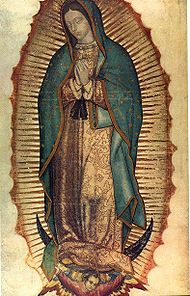 The AUR liturgical year opens with a series of holidays emphasizing the multi-cultural, multi-faith scope of American Reform Unitarian Christianity.
The AUR liturgical year opens with a series of holidays emphasizing the multi-cultural, multi-faith scope of American Reform Unitarian Christianity.
All Corners Day on November 12 honors “Pious Outsiders” from other nations and faiths. The Thanksgiving season is famously devoted to peaceful cooperation between different ethnic and religious communities. And, these holidays culminate on January 6 with Epiphany — the epitome of Christian syncretism — which commemorates the adoration of infant Jesus by the Magi, who were foreigners to Judea and members of a non-Abrahamic religion.
December 12, which is the last of the 12 Days of Gold commemorating Mary’s motherhood, is also in the tradition of inter-faith community. On this day, in conjunction with Roman Catholics we honor the Our Lady of Guadalupe, who is believed by many scholars to be an exaptation of Aztec devotion to Tonantzin, meaning “Our Mother,” a title bestowed upon various divine female figures, similar to the Hindu term Devi.
Universal Religion
Some may say that mixing Christianity with pagan ideas corrupts the religion, but the Gospel is full of examples (beyond the Magi) of virtue found in other faiths. Jesus praised the faith of a pagan Centurion, and used a member of the hated Samaritan sect — considered heretics by other Jews — as a symbol of good behavior. Paul asserted (Acts of the Apostles 17:23) that the pagan Greek “Unknown God” was the same God worshiped by Christians.
Christianity has embraced other spiritual idioms from the very beginning. Syncretism is the essence of original, or “primitive,” Christianity.
So, just as St. Nicholas is redeemed by his transformation from a brutal historical bishop into a symbol of generosity and childhood morality by adapting pagan traditions to Christian purpose, Tonantzin was brought into the Christian fold literally by adopting the mantle of the Divine Lady from the Apocalypse 12:1, “a woman clothed with the sun, and the moon under her feet, and on her head a crown of twelve stars,” who is considered by most Christian theologians to represent Mary in spiritual form.
This connection to the Apocalypse makes Our Lady of Guadalupe especially significant for Reform Unitarians, as we also consider ourselves the Reformed Unitarian Church of the Apocalyptic Saints.
Parabolic Truth
There are many traditions associated with Guadalupe that are considered by scholars to be of doubtful historical facticity. For example, did She miraculously appear on the cloak of Juan Diego, or was She painted by “Marcos the Indian” as one 16th century record indicates? Was Juan Diego a real person? Was the Bishop Zumárraga even in Tepeyac when Juan Diego is said to have presented him with miraculous roses proving Mary’s request for a shrine?
While the facticity of events is important for science and history, more important to the moral purpose of religion is the symbolic meaning of spiritual imagery and narratives. Is the validity of the parable of the Prodigal Son challenged by the fact that there was no such person? Of course not. Parabolic truth is not predicated on historical fact.
The parabolic truths behind the story of Our Lady of Guadalupe, the reborn Aztec Tonantzin, are that there is nothing that cannot be redeemed to the One True God, that God the Creator is not confined in some geographic or ethnic corner of Creation, and that true religion finds eternal renewal wherever it journeys.
_
[This story has been published during previous Christmas seasons]
